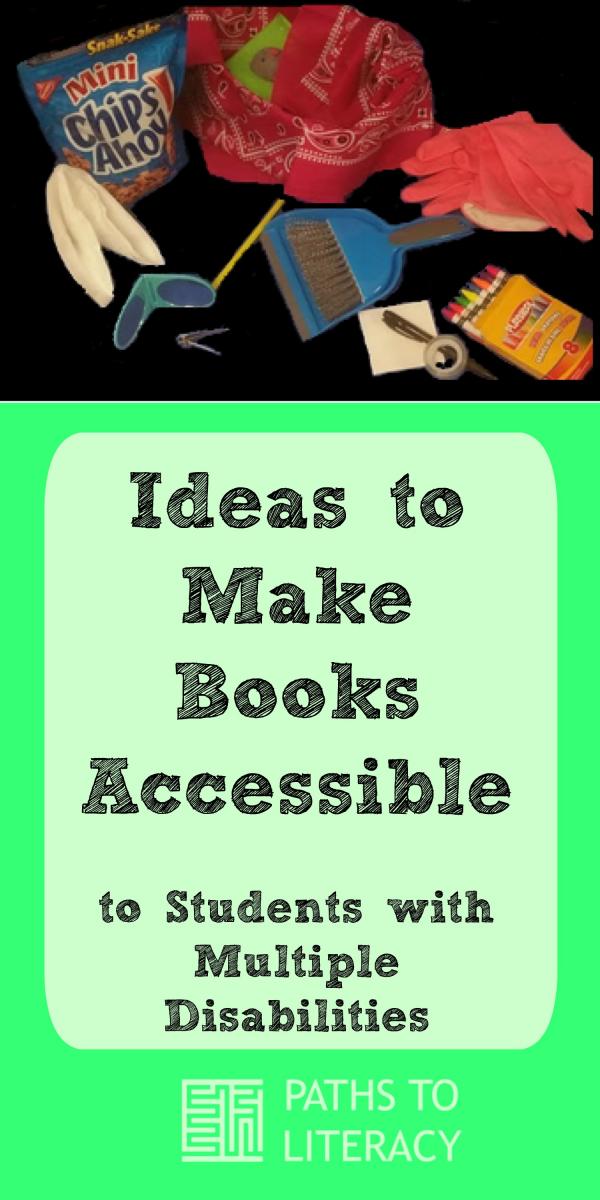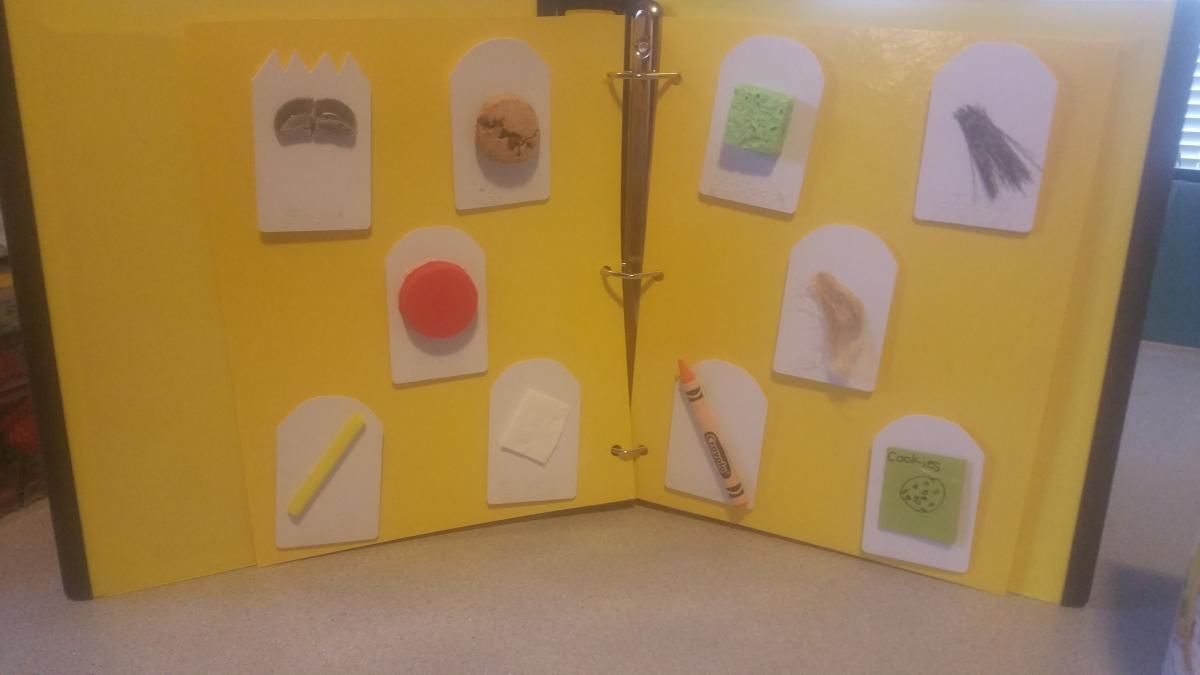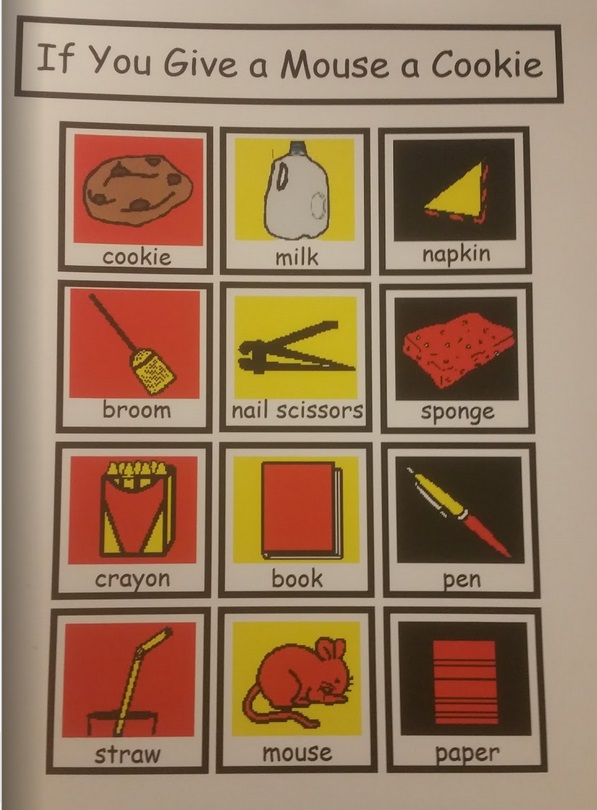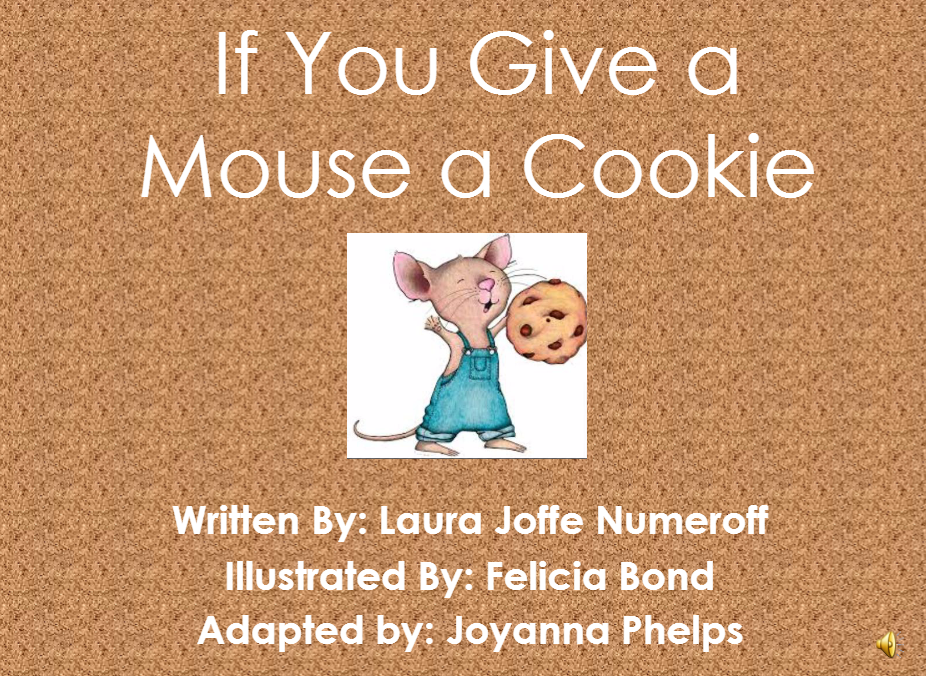"If You Give a Mouse a Cookie": Accessible Ideas for Children with Multiple Disabilities
Submitted by Joyanna0510 on May 04, 2017
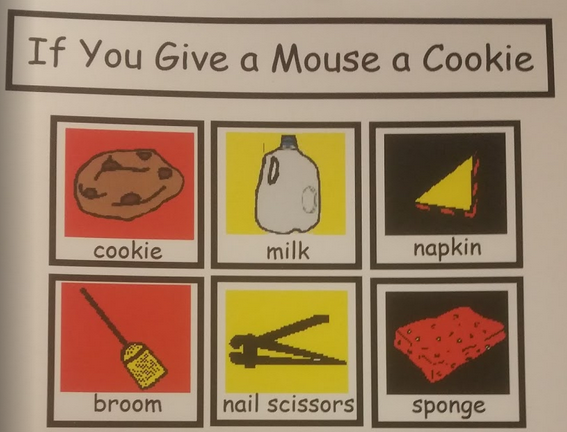
As part of the graduate coursework for Visual Impairments and Multiple Disabilities in the Teacher Preparation Program in Visual Impairments at the University of Kentucky, students were asked to complete four projects: Story Box, Picture Communication Symbols for Story Box, Tactile Communication Symbols, and Talking Book Project.
We are sharing them on Paths to Literacy and hope that others will use them! Please add your comments at the bottom of the page. This project is based on If You Give a Mouse a Cookie by Laura Joffe Numeroff.
Story Box
I chose the book If You Give a Mouse a Cookie by Laura Numeroff for my Story Box Lesson. This book provides children with a variety of opportunities to interact and explore objects that relate to the text. The objects help children develop and understand vocabulary that is essential for learning the purpose of objects, positional and spatial concepts, sequencing and answering comprehension questions. The objects can be used during direct instruction, in an independent work station or as an anticipatory set to help with engaging the students.
Materials
The tactile objects that I chose for the story box came directly from the book to help symbolize concepts in a concrete way. Items included are listed below. Items used for this story box are organized in the shoe box that the mouse takes his nap in.
-
Mouse toy (representing mouse)
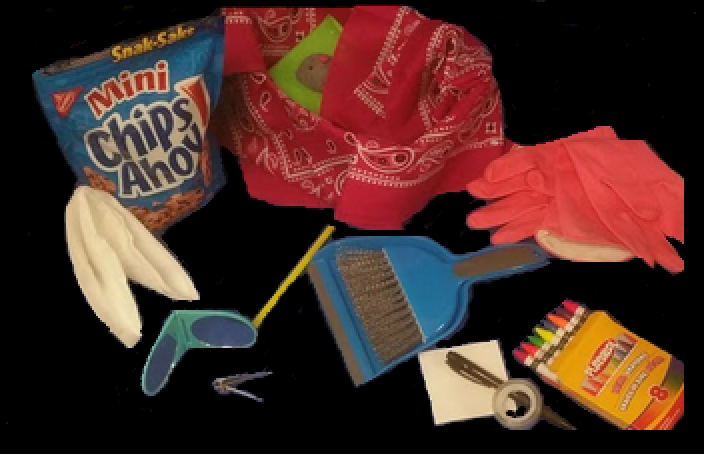
- Cookie package (representing cookie)
- Broom (cleaning up)
- Napkin (cleaning face)
- Mirror (looking at self)
- Nail scissors (cutting hair)
- Sponge (pillow for sleeping)
- Bandana (blanket for sleeping)
- Gloves (washing the floor)
- Straw (drinking milk)
- Pen (writing his name)
- Paper (to write his name down on)
- Crayons (coloring picture)
- Tape (hanging drawing on refrigerator)
Tactile Symbols
In order to provide students with a multi-sensory experience, we have learned to use Tactile Symbols to help our students to visualize and explore vocabulary concepts. I chose these specific symbols because they represent important events and essential vocabulary within the story. In order to use the Tactile Symbols, students are not required to have prior knowledge, as the vocabulary will be explicitly taught throughout the lessons. Tactile Symbols are a great way to engage and involve students in actively participating regardless of their ability or age. In conjunction with the Story Box, Talking Book and Picture Symbols, the Tactile Symbols are a great way to allow your students to respond to comprehension questions, sequence stories, and demonstrate their understanding of vocabulary.
The Tactile Symbols are also a great tool for teaching vocabulary using systematic instructional procedures (simultaneous prompting, time delay, etc). The Tactile Symbols can be used in conjunction with a Story Based Lesson (SBL). Within a SBL, questions are asked prior to and while the book is read. The SBL begins with a prediction question where the students can use their tactile symbols to answer. The remaining questions are embedded throughout and students can use symbols to engage and respond while the story is being read aloud. Teachers could also use the questions and symbols as a post assessment at the end of the lesson or unit. (If You Give a Mouse a Cookie: Story Based Lesson )
Tactile Symbols
- Cookie
- Milk
- Napkin
- Broom
- Nail scissors
- Sponge
- Crayon
- Book
- Pen
- Straw
- Mouse
- Paper
Questions
- What will the story be about? cookie
- Who is the main character? mouse
- What does the mouse eat? cookie
- What does the mouse drink? milk
- What does a mouse drink with? straw
- What does the mouse use to clean his mouth? napkin
- What does the mouse use to clean the floor? broom
- What does the mouse color with? crayon
- What does the mouse read? book
- What does the mouse brush? hair
- What does the mouse use to wash the floor? sponge
Picture Symbols
The Picture Symbols for this story were designed specifically for individuals with Low Vision or Cortical Visual Impairment (CVI). I created 12 Picture Symbols to help students with visualizing vocabulary concepts. Each symbol is 2x2 and the colors have been modified to show contrast and contains a thick, black border in order for students to better visualize. The symbols I chose were ones that represent important events and vocabulary in the story. These symbols will help students to answer comprehension questions, sequence the story and build a better understanding of vocabulary. Before the story is read, students can listen to and match pictures that are associate with the events and vocabulary in the story.
Questions
- If you give a mouse a cookie, what do you think he will ask for and why?
- When you give him milk, what will he ask for? Straw
- What does the mouse use to clean his face? Napkin
- What does the mouse look in to make sure he doesn’t have a milk mustache? Mirror
- What does the mouse notice when he looks in the mirror? He needs his hair trimmed with nail clippers.
- What does the mouse use to clean up? Broom, sponge
- What does the mouse do after he cleans the house? He takes a nap
- What does the mouse do to make himself comfortable? Pillow and blanket
- What does the mouse use to draw a picture? Crayon
- What does the refrigerator remind him? He’s thirsty- straw, milk
- What does the mouse like to eat with the milk? Cookie
Talking Book Project
What Can the Mouse Do? Emergent Reader
This talking book is based on If You Give a Mouse a Cookie by Laura Numeroff. The Talking Book I created is to help students with fluency and understanding verbs.
